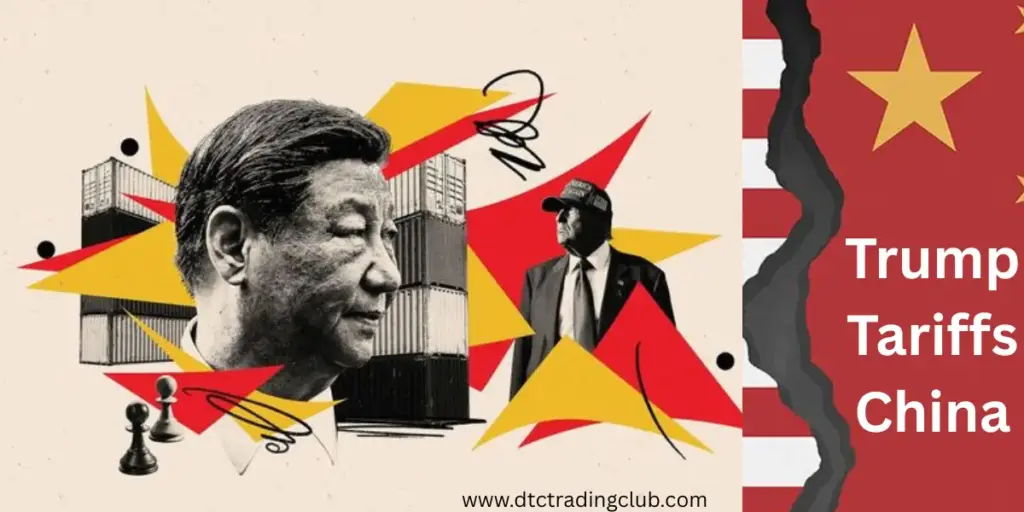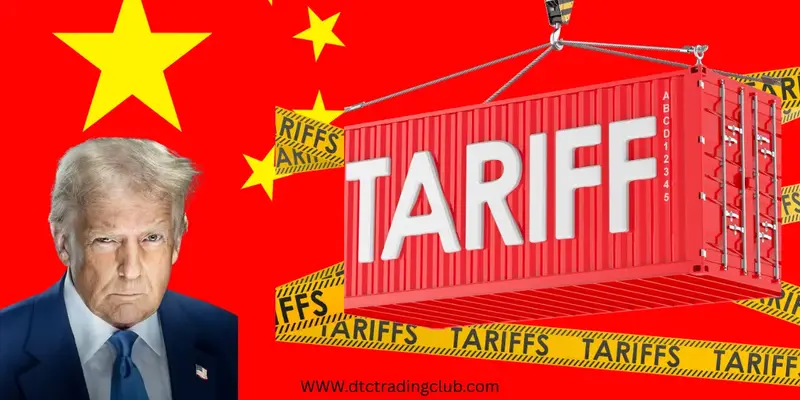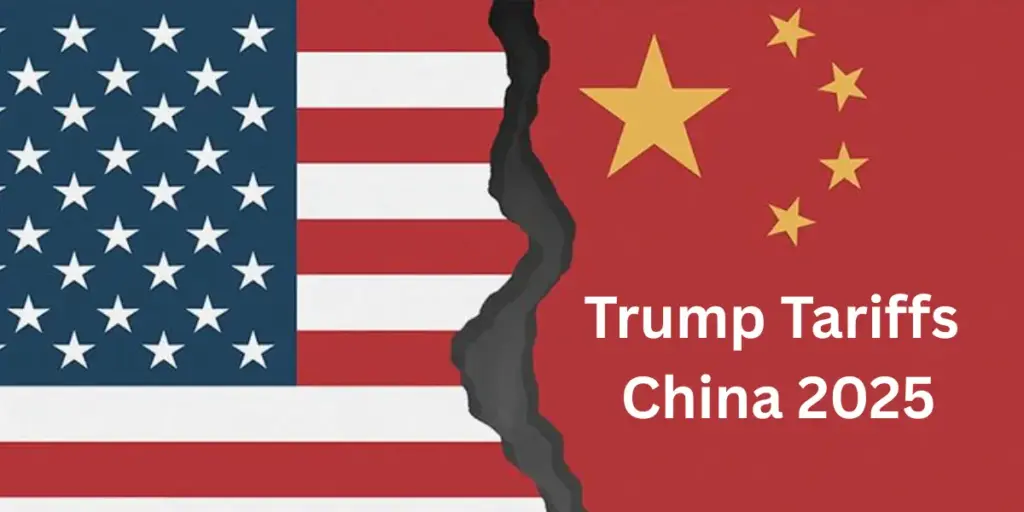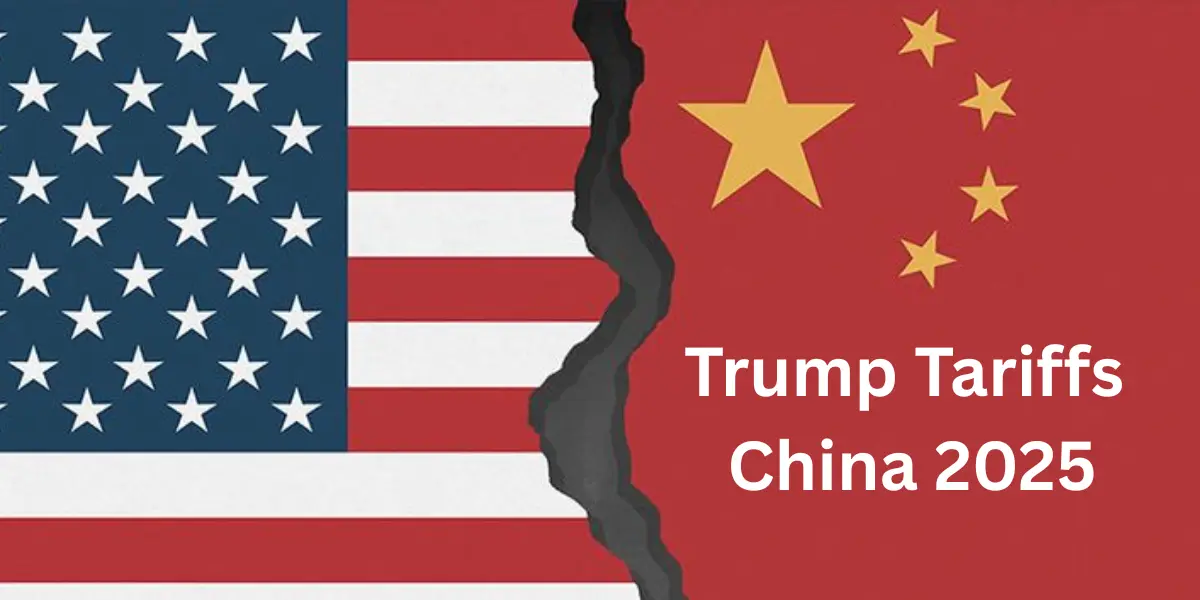Introduction:
The global economy is once again on edge as former U.S. President Donald Trump campaigns on a bold trade policy for 2025, which includes imposing aggressive tariffs on Chinese imports. With Trump potentially returning to the White House in January 2025, discussions around “Trump Tariffs China 2025” have sparked international debate. These proposed tariffs could reshape global supply chains, raise prices for consumers, and reignite a full-scale trade war.
In this blog, we explore everything you need to know, including potential impacts, political timelines, expert opinions, and related questions like, “Will Trump really impose tariffs?” and “Can Trump put tariffs on Canada?“

Table of Contents
Trump Tariffs China 2025: What’s the Plan?

Donald Trump has already made it clear that he intends to take a hard stance on China if elected. He’s proposing a massive 60% tax on everything the U.S. imports from China. This is a significant escalation from his 2018–2020 tariffs, which already disrupted global trade.
According to Trump, the goal is to:
- Protect American manufacturing
- Decrease reliance on Chinese goods
- Address intellectual property theft and unfair trade practices
While it may sound like a protective measure, economists warn that such drastic action could trigger inflation and hurt U.S. consumers more than it helps manufacturers.
What Goods Would Be Affected?
If implemented, nearly $500 billion worth of Chinese imports could be affected. This includes:
- Consumer electronics
- Automobiles and parts
- Pharmaceuticals
- Textiles and clothing
Prices for many everyday items could rise, impacting American households directly.
When Does Trump Get Signed In If He Wins?
If Donald Trump wins the 2024 U.S. Presidential Election, he would officially be inaugurated on January 20, 2025. This is when he would gain full executive powers and could begin signing new executive orders, including tariffs.
Given Trump’s past behavior, any tariff-related orders could be among his first 100-day agenda, aiming to deliver quick political wins and signal a strong America-first policy.
Will Trump Really Impose Tariffs Again?
It’s not just speculation; Trump has a track record. During his 2017–2021 presidency, he:
- Imposed 25% tariffs on Chinese steel
- Launched a 10% duty on aluminum
- He placed tariffs on more than $360 billion worth of Chinese products during his first term.
So the question isn’t if he will impose tariffs, but how severe and how fast.
Trump has said, “Tariffs give us strength and negotiating power.” For his supporters, it’s a return to economic nationalism. For critics, it’s a path toward trade isolationism.
Potential Tariff Expansion
Unlike in his first term, Trump’s 2025 plan is broader, targeting not just China but also other trading partners. This raises concerns among U.S. allies and global investors.
Can Trump Put Tariffs on Canada?
Interestingly, the issue isn’t limited to China. Many are asking, can Trump put tariffs on Canada? The answer is yes, he can—and he already has.
During his first term, Trump:
- Imposed tariffs on Canadian aluminum and steel
- Threatened duties on Canadian cars
- Questioned trade deals like NAFTA (replaced by USMCA)
Despite being a close ally, Canada isn’t immune to Trump’s tariff policies. If disputes over energy, agriculture, or auto parts arise again, we could see renewed tensions.
What’s the Legal Framework?
Under U.S. law, the President can impose tariffs under:
- Section 232 (national security)
- Section 301 (unfair trade practices)
- International Emergency Economic Powers Act
Trump used all these tools in his first term and could repeat this strategy in 2025.
Will Trump’s Tariffs Work?
Potential Benefits:
- Short-term boost for U.S. manufacturers
- Leverage in trade negotiations
- Reduction in trade deficit
- Encouragement for reshoring industries
Potential Drawbacks:
- Higher costs for consumers
- Retaliation from trading partners
- Market instability and job losses in export sectors
- Strained global alliances
Several studies by think tanks and universities show that the 2018–2019 tariffs cost American consumers billions, without significant gains in manufacturing.
How Would China React?
China isn’t likely to stay silent. If the U.S. imposes broad tariffs in 2025, China could:
- Impose retaliatory tariffs on U.S. goods
- Reduce agricultural imports
- Target American companies in China
- Diversify trade to other countries
This could hurt U.S. farmers, tech firms, and even companies like Apple and Tesla that rely on Chinese markets and manufacturing.
Global Repercussions
Other countries may be forced to pick sides or rethink their trade alliances. This could deepen the global economic divide and lead to regional trade blocs.
What Should American Consumers Expect?
Let’s talk practical impact. If tariffs rise sharply in 2025:
- Prices of electronics, toys, and furniture could soar
- Car parts and auto repair costs may increase
- Medical supplies could get more expensive
- Imported groceries and packaged goods might spike
Middle- and low-income families would feel the pinch the most, which is ironic since they’re also Trump’s key voter base.
Business & Market Impact
For U.S. businesses, new tariffs would require fast adjustments:
- Importers may need to shift sourcing away from China
- Manufacturers might face higher input costs
- Exporters could lose access to key global markets
- Retailers would have to raise prices or cut margins
Stock markets could respond with volatility, especially in sectors like tech, automotive, and retail.
What Experts Are Saying
Economists from institutions like Brookings and MIT warn that large-scale tariffs could worsen inflation and slow GDP growth. According to a 2023 Peterson Institute study, a universal tariff of 60% on Chinese goods could shrink U.S. GDP by 1.2% and cost over 300,000 jobs.
However, Trump’s supporters argue that long-term gains—like independence from Chinese supply chains—are worth the short-term pain.
What Voters Need to Know

This issue is central to the 2024 election. Trump’s tariff policy isn’t just economic; it’s political. It appeals to:
- Blue-collar workers
- Protectionist voters
- Nationalists seeking less dependency on foreign goods
But critics argue it’s an oversimplified fix for a much deeper issue. For many undecided voters, the real question might be:
Are tariffs the right path to rebuilding America’s economy or just a risky gamble?
Conclusion: The Road Ahead
As the 2025 inauguration date nears, markets, voters, and governments around the world are watching closely. Whether you support Trump’s approach or not, there’s no denying the Trump Tariffs China 2025 plan could be one of the most disruptive economic decisions of the decade.
FAQs:
1. What are Trump’s tariffs on China in 2025?
ANSWER: Trump’s 2025 tariff proposal includes a 60% tax on all Chinese imports if he is re-elected, aiming to reduce reliance on China and protect U.S. industries.
2. When will Trump’s China tariffs go into effect if he wins?
ANSWER: If Trump wins the 2024 election, he would be inaugurated on January 20, 2025, and the tariffs could be implemented within his first 100 days in office.
3. How will Trump’s tariffs affect consumers in the U.S.?
ANSWER: Prices of goods like electronics, furniture, clothing, and auto parts could rise sharply, impacting middle- and low-income households the most.
4. Will Trump’s tariffs on China really work?
ANSWER: While tariffs may protect some U.S. jobs short-term, many experts argue they raise consumer prices, hurt exporters, and may damage the broader economy.
5. Can Trump legally impose tariffs without Congress?
ANSWER: Yes. Trump can use executive powers under Section 232, Section 301, or the International Emergency Economic Powers Act to impose tariffs unilaterally.
6. Did Trump impose tariffs on China during his first term?
ANSWER: Yes. From 2018 to 2020, Trump placed tariffs on over $360 billion in Chinese goods, leading to a major U.S.-China trade war.
7. Could Trump put tariffs on other countries like Canada?
ANSWER: Yes. Trump has previously imposed tariffs on Canada and could do so again if trade tensions rise, especially in the steel, aluminum, or automotive sectors.
8. How might China retaliate if Trump imposes new tariffs?
ANSWER: China could respond with its own tariffs on U.S. goods, reduce agricultural imports, target U.S. companies in China, or shift trade to other global partners.
9. Will Trump tariffs cause another global trade war?
ANSWER: There’s a strong possibility. Aggressive tariffs could escalate tensions with China and other nations, triggering retaliatory trade barriers worldwide.
10. What should businesses do to prepare for Trump tariffs in 2025?
ANSWER: Businesses should diversify supply chains, explore domestic manufacturing, adjust pricing strategies, and prepare for trade uncertainty.
11. What is meant by Trump Tariffs China 2025?
ANSWER: “Trump Tariffs China 2025” refers to Donald Trump’s proposed plan to impose up to 60% tariffs on all Chinese imports if he returns to the White House in 2025.
12. Why is Trump planning new tariffs on China in 2025?
ANSWER: Trump claims the tariffs will protect American manufacturing, reduce reliance on Chinese goods, and address unfair trade practices by China.
Final Thoughts:
- Expect higher prices if tariffs return
- Trade relationships will shift
- Businesses must prepare for policy uncertainty
- The global economy could enter a new phase of fragmentation
Stay informed and stay ready. Whether you’re a consumer, business owner, or policymaker, the choices made in early 2025 will shape the global economy for years to come.
